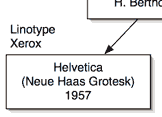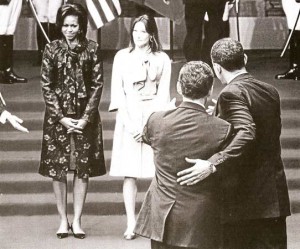I am employed as a design professor at NSCAD, a small visual arts university in Halifax, a city that hangs off the edge of eastern North America. The global economic downturn has disrupted, to say the least, many of our dreams and aspirations. In education, this means that belts need to tighten because some schools were using stock market investment income to cover operating budgets. NSCAD University, as a public institution that had not kept up with endowment giving, did not fall into this trap. Our problem is that the construction (and shortcuts taken at that time) of the Port Campus several years ago has resulted in a serious budget shortfall.
In April, our President, David P. Smith, established an ad hoc “task force” to look at ways the university could save money with as little impact as possible upon the student experience. I sat in the meetings and while many of the suggestions brought forward were good, and everyone understands the profound difficulties facing us, I could not help but wonder if how different our discussions would be if, instead of try to patch a system that has been running for 122 years (with all its patches, grafts and compromises), we were given a budget and a mandate to start fresh and build a school from scratch?
 Last October, during my swing through China to promote NSCAD and our Master of Design program, I visited the Shanghai Institute of Visual Arts (SIVA), with the help of a recent MDes graduate, Feichen Wong. SIVA is a new university affiliated with Fudan University, one of China’s top ten schools. To establish the school, the central government gave Fudan about 60 million dollars for capital infrastructure. The result is three postmodern buildings in suburban Shanghai’s University Park. I met with Zhuang Liang Xiao, Executive Vice-President and Zhang Tong, Dean of School of Spatial and Industrial Design.
Last October, during my swing through China to promote NSCAD and our Master of Design program, I visited the Shanghai Institute of Visual Arts (SIVA), with the help of a recent MDes graduate, Feichen Wong. SIVA is a new university affiliated with Fudan University, one of China’s top ten schools. To establish the school, the central government gave Fudan about 60 million dollars for capital infrastructure. The result is three postmodern buildings in suburban Shanghai’s University Park. I met with Zhuang Liang Xiao, Executive Vice-President and Zhang Tong, Dean of School of Spatial and Industrial Design.
Prof. Zhang told me that he enjoyed having the opportunity to re-envision a new school; they tried to design the institution with fresh eyes and with a knowledge that graduates will be faced with 21st century challenges. SIVA is organized into a number of Colleges, Academies, Departments and Institutes: the College of Communication Design, a Digital Media Institute, the College of Space and Industrial Design, the Fashion Institute of Design, the Academy of Fine Arts, the Departments of Performing Arts and Fine Art, a Graphic Information Center, and a Management Training Center. I was not able to determine why one area was an “Institute” and the other an “Academy.”
I left SIVA with a sense of envy, and it made me wonder what it would be like to be given a blank sheet of paper: could I do better? Granted, it’s one thing to rebuild with a $60 million cheque in your pocket, compared to owing a million or more. And I do not for a moment think that the money given to my Chinese collegues is in any way unencumbered; I am not sure which is better, to be rich yet loaded down by thousands of years of educational practice that merits copying over originality, or as NSCAD is, impoverished yet embued with a tradition of spirit of creative optimism—perhaps NSCAD is better off in the long run?


 A photo in this weekend’s Globe and Mail caught my eye: US First Lady Michelle Obama and French First Lady Carla Bruni-Sarkozy were standing at attention with their husbands in the foreground during the NATO summit in Strasbourg. My attention was fixed not on the content, but on the exposure of the photograph. Ms. Obama was dressed in a rather dark dress, and Ms. Sarkozy was in white. The extreme dynamic range of the scene required a decision: do we expose for the black woman, or the white woman? And in this case, the black woman took precedence, resulting in a totally washed-out Ms. Sarkozy.
A photo in this weekend’s Globe and Mail caught my eye: US First Lady Michelle Obama and French First Lady Carla Bruni-Sarkozy were standing at attention with their husbands in the foreground during the NATO summit in Strasbourg. My attention was fixed not on the content, but on the exposure of the photograph. Ms. Obama was dressed in a rather dark dress, and Ms. Sarkozy was in white. The extreme dynamic range of the scene required a decision: do we expose for the black woman, or the white woman? And in this case, the black woman took precedence, resulting in a totally washed-out Ms. Sarkozy.